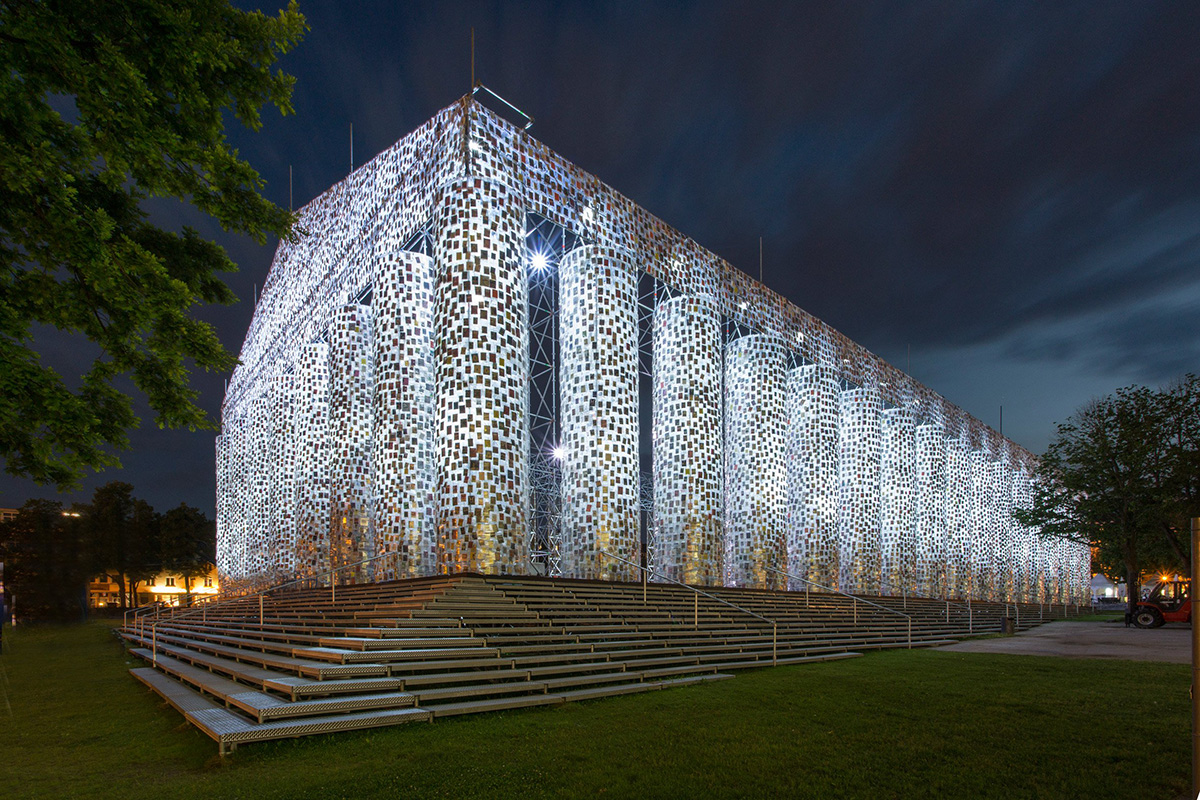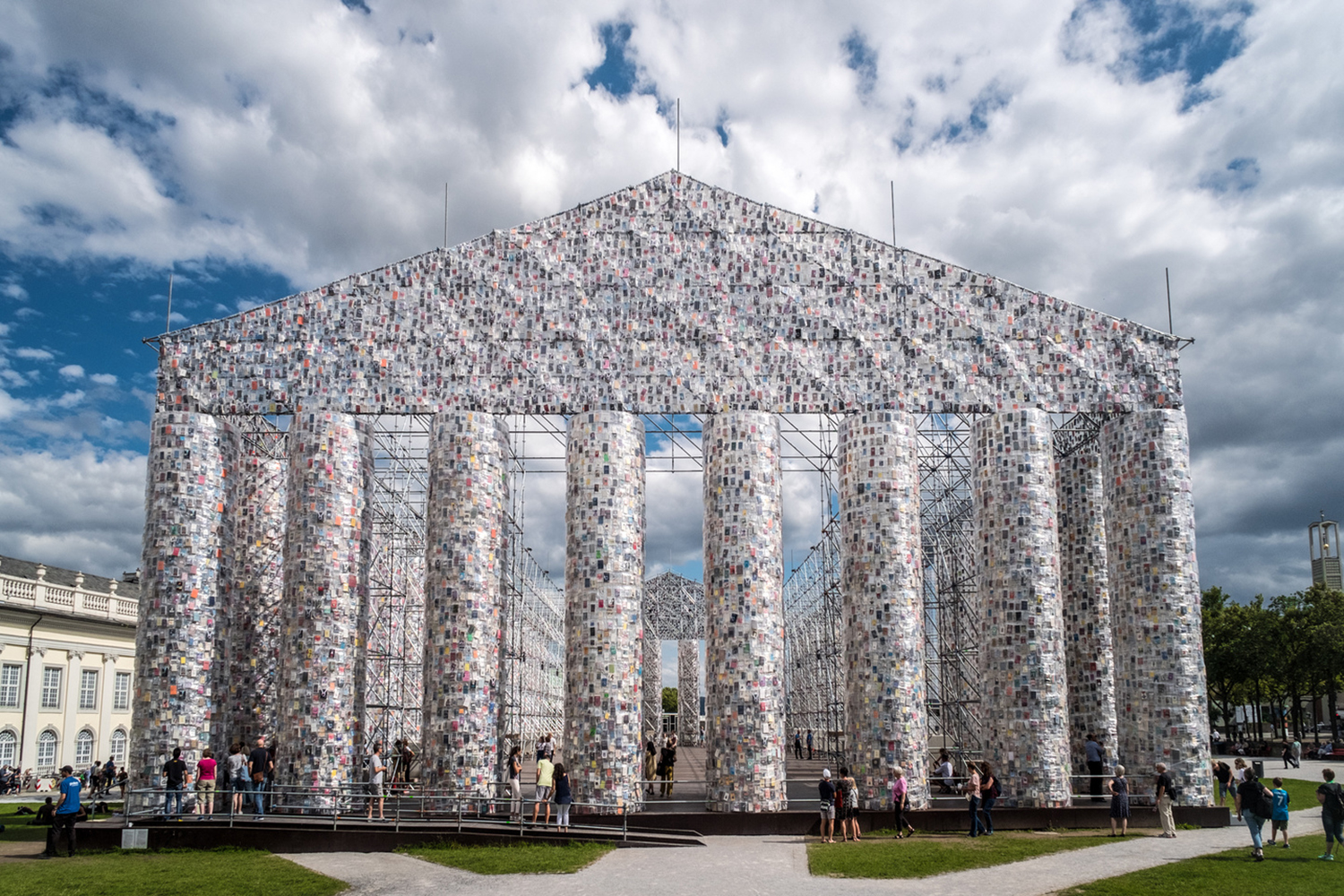Partenon De Libros Marta Minujin
The partenon de libros, created by famous Argentine artist Marta Minujin, is a powerful symbol of intellectual freedom and resistance to censorship. Made up of over 30,000 banned books from around the world, the installation is an awe-inspiring display of the power of art to challenge authority, spark dialogue, and inspire change. In this blog post, we'll delve deeper into the story behind the partenon de libros and explore its impact on the world.
Pain Points
The censorship and banning of books is a universal issue that affects people around the world. Governments often restrict the flow of information deemed "dangerous" or "subversive" to their regimes, but this often comes at the expense of denying people access to important works of literature, philosophy, and critical thinking. For many, the ban on certain books is simply an infringement on individual freedom--a violation of their right to read, think, and explore new ideas.
Target of Partenon De Libros
At its core, the partenon de libros represents a direct challenge to censorship and an affirmation of the human spirit's ability to stand up to oppression and fight for truth and justice. It is an ode to the power of books to inspire, educate, and transform people's lives. Marta Minujin built the installation as a way to remember the victims of censorship and to inspire future generations to keep fighting for intellectual freedom, even in the face of enormous challenges.
Summary of Main Points
The partenon de libros is a powerful symbol of intellectual freedom that challenges censorship and inspires people around the world to keep fighting for their right to read, think, and explore new ideas. Made up of over 30,000 banned books from around the world, the installation is a testament to the transformational power of art to spark dialogue, provoke change, and inspire resistance to oppression.
Personal Experience with Partenon De Libros
When I first heard about the partenon de libros, I was struck by its sheer size and the enormity of the statement it made. Growing up, I had always taken my access to books for granted, never fully appreciating the extent to which my freedom to read was a hard-fought battle won by activists and artists like Marta Minujin. Seeing the installation for the first time made me realize just how powerful art can be as a tool for social change and how important it is to preserve our right to read and explore new ideas, even in the face of adversity.
Impact on the World
Since its creation, the partenon de libros has inspired people around the world to keep fighting for intellectual freedom and challenging censorship. It has been exhibited in cities from Buenos Aires to Kassel, Germany, and has served as an inspiration to countless artists, activists, and writers. In many ways, the partenon de libros is a reminder that no matter how powerful authority may seem, the human spirit is indomitable and always capable of fighting for what is right, just, and true.
Exploring the Partenon De Libros in Detail
The partenon de libros is made up of thousands of banned books that have been collected from around the world. Each book is carefully wrapped in a plastic cover to protect it from the elements and is mounted on a metal frame to create the massive structure. The structure is a replica of the Parthenon in Athens—fittingly, a symbol of democracy and intellectual freedom.
The partenon de libros was first created in Buenos Aires in 1983 as a way to celebrate the end of a period of military dictatorship in Argentina. Since then, the installation has been exhibited in cities around the world, including Madrid, Kassel, and Toronto. In each city, the installation takes on a slightly different meaning, reflecting the unique political and social contexts in which it is displayed.
Why the Partenon De Libros Matters Today
Today, the partenon de libros remains just as relevant as it was when it was first created. Around the world, governments continue to censor literature, restrict access to information, and suppress critical thinking. Activists and artists continue to fight back, using their voices and their art to demand greater freedom and accountability. The partenon de libros reminds us that, even in the face of seemingly insurmountable opposition, the human spirit is capable of achieving incredible things.
Question and Answer
What inspired Marta Minujin to create the partenon de libros?
Marta Minujin was inspired to create the partenon de libros in response to the censorship and book-burning that had taken place during the military dictatorship in Argentina. She wanted to create a powerful symbol of resistance to oppression and an affirmation of the human spirit's ability to fight back.
Has the partenon de libros been exhibited in the United States?
Yes, the partenon de libros was exhibited in Toronto, Canada in 2018 as part of the Nuit Blanche festival.
What happens to the books when the exhibition is over?
After the exhibition is over, the books are usually donated to libraries or educational institutions, where they can continue to be used to promote intellectual freedom and critical thinking.
What can individuals do to support intellectual freedom and fight against censorship?
Individuals can do many things to support intellectual freedom, including reading and sharing literature that has been banned or censored, speaking out against censorship, and supporting organizations that work to promote intellectual freedom and critical thinking.
Conclusion of Partenon De Libros Marta Minujin
The partenon de libros, created by the iconic Argentine artist Marta Minujin, is a powerful symbol of intellectual freedom, resistance to censorship, and the human spirit's ability to fight back against oppression. Made up of over 30,000 banned books from around the world, the installation serves as a powerful reminder of the importance of preserving our right to read, think, and explore new ideas, even in the face of adversity. By inspiring people around the world to keep fighting for intellectual freedom, the partenon de libros is a true testament to the transformative power of art.
Gallery
Marta Minujín, El Partenón De Libros, 1983, Avenida 9 De Julio, Buenos

Photo Credit by: bing.com /
AMBIENTES | El Partenón De Los Libros Por Marta Minujin

Photo Credit by: bing.com /
Galería: El Partenón De Marta Minujín Construido Con 10 Mil Libros
Photo Credit by: bing.com /
Marta Minujín's The Parthenon Of Books: A Living Elevation Of Social

Photo Credit by: bing.com / parthenon books marta documenta minujín forbidden kassel elevation relations cultural social living minujin flash mathias accomplishment celebration collection installation photography
Una Artista Planea Construir Un Partenón De Libros Prohibidos - La
Photo Credit by: bing.com /

Belum ada Komentar untuk "Partenon De Libros Marta Minujin"
Posting Komentar